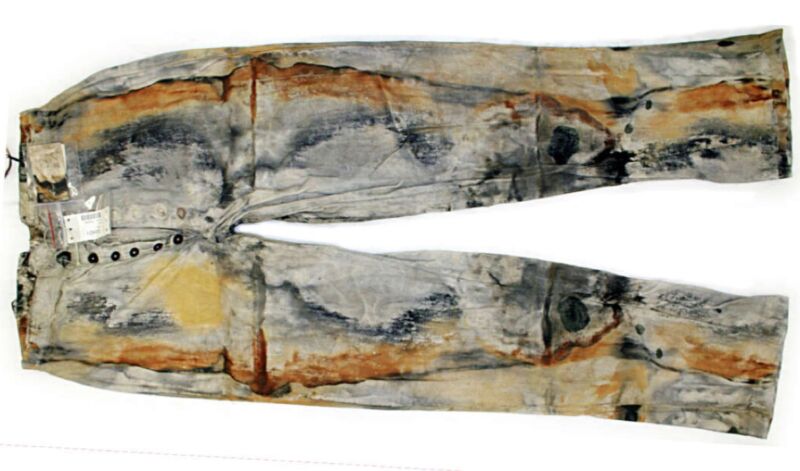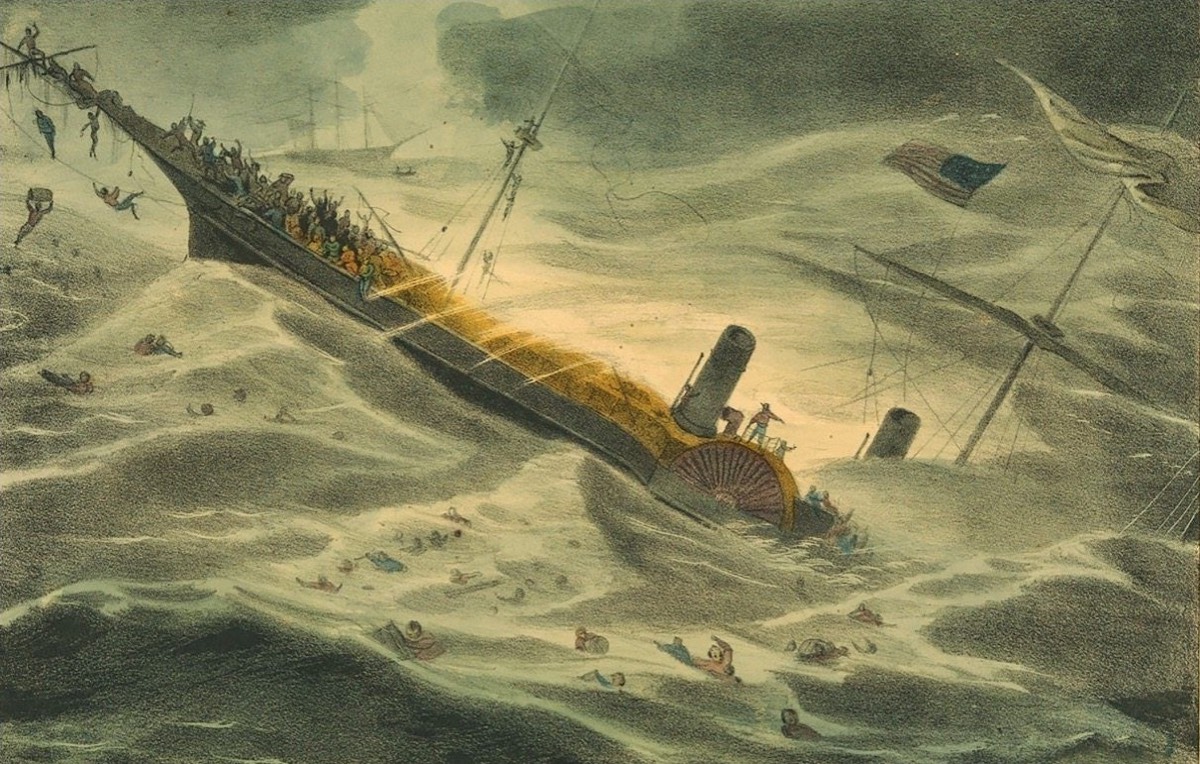
A pair of men's jeans recovered from the wreckage of a 19th-century steamer ship fetched an eye-popping $95,000 at auction last week. Per the auction house description, it's the earliest known pair of five-button fly, heavy-duty work pants, most likely made by or for Levi Strauss & Company in the 1850s. The pants went down with the SS Central America off the Carolina coast during a hurricane in September 1857 and are remarkably well-preserved, thanks to the anaerobic environment where they were found. Previously, the oldest known pair of Levi's was found in an abandoned mine shaft and dated back to the 1880s, selling at auction earlier this year for $87,400.
The SS Central America was a 280-foot steamer operating between Central America and the US East Coast in the 1850s. On its ill-fated final voyage, it carried 587 passengers and crew, many of whom had traveled from San Francisco to Panama via another steamship. (This was before the construction of the Panama Canal.) Among its cargo were thousands of freshly minted 1857 Double Eagle coins, along with older gold coins and ingots (gold bricks)—hence its nickname, the "Ship of Gold."
The voyage started out smoothly enough, but on September 9, 1857, a Category 2 hurricane hit, shredding the ship's sails. Two days later, it took on water, and the paddle wheels and boiler failed. The sharp drop in steam pressure also shut down both bilge pumps, so both passengers and crew worked strenuously as part of a bucket brigade to fight off the rising water. There was a brief calm, but the crew couldn't get the boilers restarted, and soon the hurricane was back in full force.
On the morning of September 12, two nearby ships were spotted, and 153 passengers—mostly women and children—were put into lifeboats and were rescued. But the continued strong winds pulled the Central America and its remaining passengers and crew farther away. It sank at 8 pm, killing 425 people still on board. The captain, William Lewis Herndon, nobly went down with his ship. About 50 people were subsequently rescued from the waters—including a man named Ansel Easton, who had been on his honeymoon with his new wife, Adeline. (Luckily, she'd been placed on one of the lifeboats and also survived.) All the gold also went down with the ship, and the sinking was at least partially responsible for the Panic of 1857. Several New York banks on the verge of failing had badly needed that cash influx, which never came.

The Central America languished at the bottom of the ocean until 1988, when treasure hunter Tommy Gregory Thompson led an expedition to locate the wreck and recover the gold and other artifacts using remotely operated vehicles (ROVs). The recovered gold has been valued between $100 and $150 million, and the largest piece—an 80-pound gold brick nicknamed "Eureka"—fetched a record $8 million in 2015. Alas, Thompson faced lawsuits from his investors, who claimed they never saw any profits, and he went into hiding in 2012. He was arrested in a Boca Raton hotel in 2015 and ultimately lost his day in court.
The jeans recovered from the wreck were found in the trunk of a San Francisco merchant named John Dement. The design for the classic Levi's we know and love, with the telltale copper rivets on the pocket corners and base of the button fly, wasn't patented until 1873, although the company itself was founded in San Francisco in 1853 as a dry goods store. But the auction house noted that in most respects—the style, shape, and size of the buttons—the Central America "miner's pants" are nearly identical to another pair of old Levi's. In addition to the mine shaft jeans auctioned earlier his year, Albert Einstein's Levi's leather jacket fetched over $110,000 when Christie's auctioned it in 2016.
Other auctioned items from the SS Central America included the wedding trousseau of the Eastons, various other clothing items, passenger receipts, baggage tags, a brass bell, chamber pots, dishware and cutlery, figurines, ship timbers, a beer bottle, and cabin keys. My personal favorites: an 1849 Colt pocket pistol, a ladies' douche kit and chastity belt, and Captain Herndon's personal sextant, a common navigational tool at the time.



3175x175(CURRENT).thumb.jpg.b05acc060982b36f5891ba728e6d953c.jpg)

Recommended Comments
There are no comments to display.
Join the conversation
You can post now and register later. If you have an account, sign in now to post with your account.
Note: Your post will require moderator approval before it will be visible.